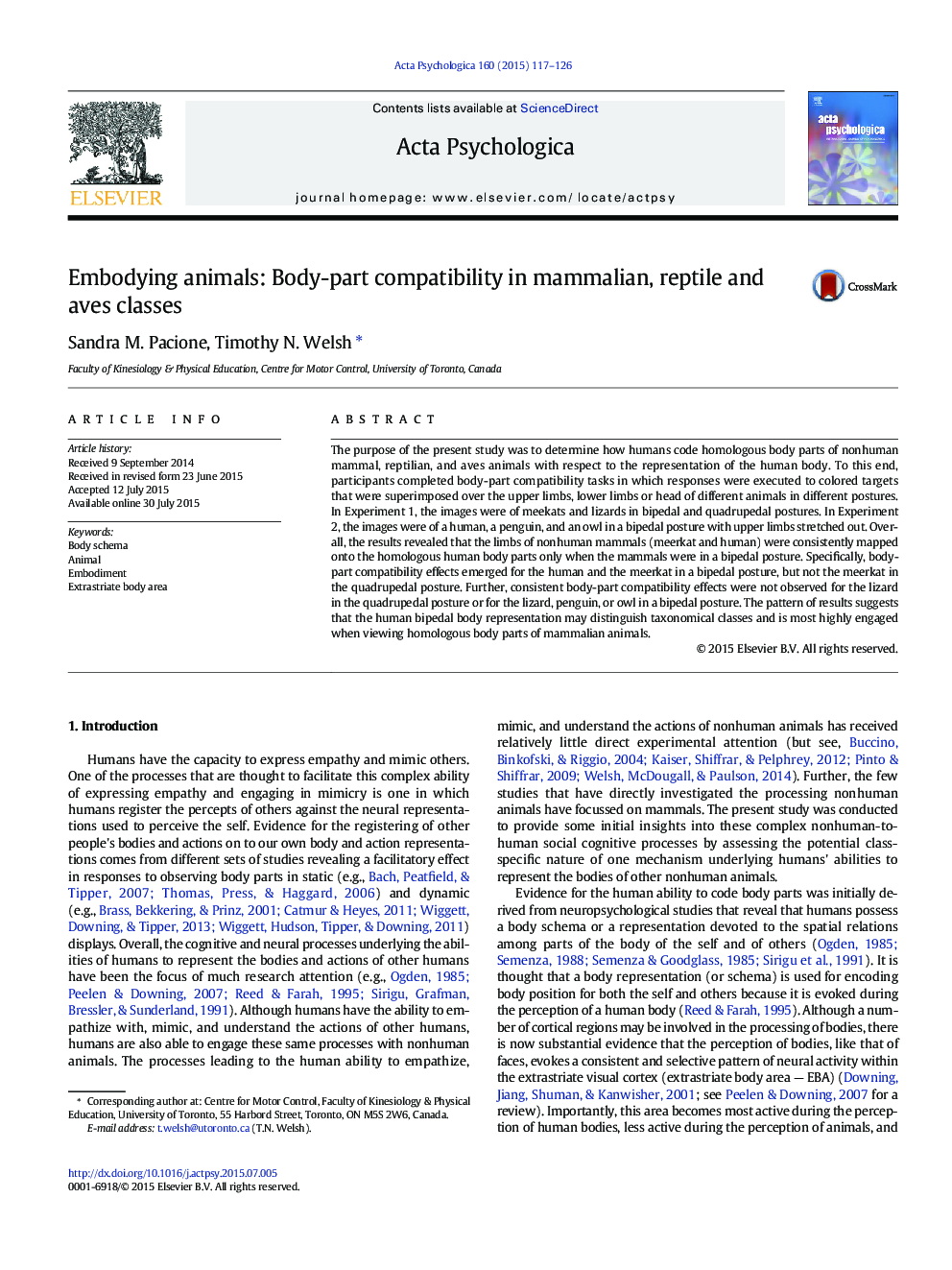| Article ID | Journal | Published Year | Pages | File Type |
|---|---|---|---|---|
| 919686 | Acta Psychologica | 2015 | 10 Pages |
•Limbs of nonhuman mammalian animals map onto human body schema in bipedal posture.•Limbs of nonhuman animals not mapped to human body schema in quadrepedal posture.•Limbs of bipedal reptilian and aves are not mapped to the human body representation.•Bipedal body representation may be sensitive to taxonomical class.
The purpose of the present study was to determine how humans code homologous body parts of nonhuman mammal, reptilian, and aves animals with respect to the representation of the human body. To this end, participants completed body-part compatibility tasks in which responses were executed to colored targets that were superimposed over the upper limbs, lower limbs or head of different animals in different postures. In Experiment 1, the images were of meekats and lizards in bipedal and quadrupedal postures. In Experiment 2, the images were of a human, a penguin, and an owl in a bipedal posture with upper limbs stretched out. Overall, the results revealed that the limbs of nonhuman mammals (meerkat and human) were consistently mapped onto the homologous human body parts only when the mammals were in a bipedal posture. Specifically, body-part compatibility effects emerged for the human and the meerkat in a bipedal posture, but not the meerkat in the quadrupedal posture. Further, consistent body-part compatibility effects were not observed for the lizard in the quadrupedal posture or for the lizard, penguin, or owl in a bipedal posture. The pattern of results suggests that the human bipedal body representation may distinguish taxonomical classes and is most highly engaged when viewing homologous body parts of mammalian animals.
